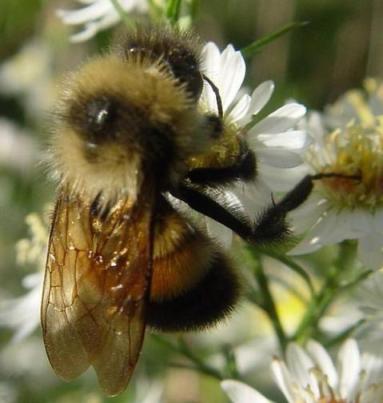Adaptation
"The Flight of the Bumblebee"
According to myth, aerodynamics proves that bumble bees should be incapable of flight based on their wing size and the frequency at which their wings beat. Despite these disadvantages bumble bees still manage to fly not due to aerodynamic efficiency, but rather due to the brute force.
Feeding
An important way the rusty-patched bumble bee has been able to adapt to its environment is in the acquisition of nutrients. Short-tongue bumble bees are unable to obtain the nectar of long tubes flowers in the normal manner, but they overcome this by biting a hole near the base of the flower, through which they insert their tongue and obtain the nectar. The hairs present on a bumble bee’s body are also an adaptation that is useful in picking up sticky pollen grains and carrying them away from the flower. Most of this pollen is transferred and packed from the hairs into the bristles of the “pollen basket” on the bumble bee’s hind legs.
The Sting
As an adaptation against predators, Queen and worker bees are both capable of stinging, but unlike honey bees, a bumble bee stinger lacks barbs so they are capable of stinging more than once. Luckily, the rusty-patched bumble bee is non-aggressive and will only sting if disturbed.
Looking Good in Stripes!
The vivid warning coloration of the bright black and yellow stripes is another adaptation that helps the bumble bees avoid predation.
Learn about the rusty-patched
bumble bee's diet!
